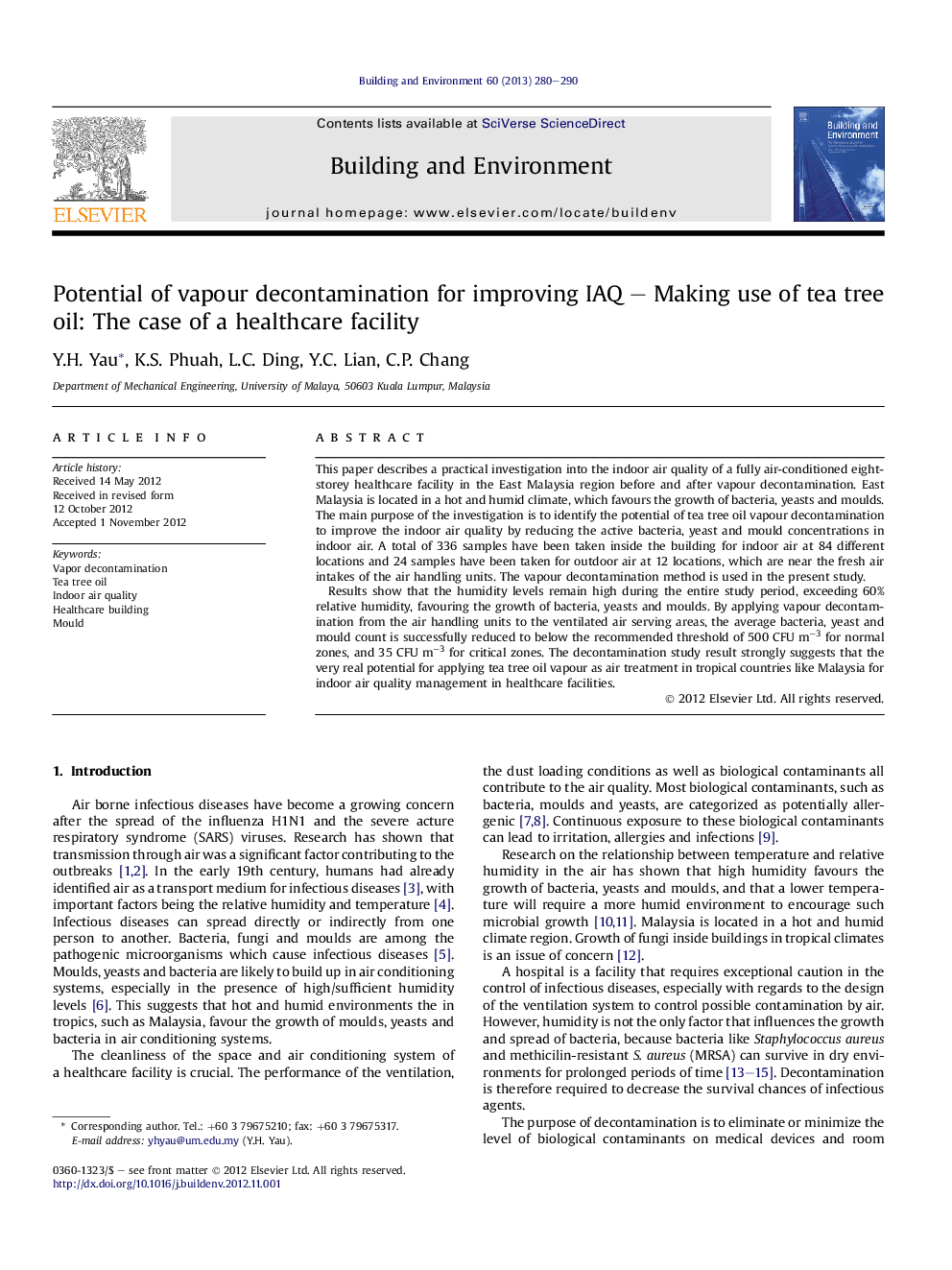| Article ID | Journal | Published Year | Pages | File Type |
|---|---|---|---|---|
| 248414 | Building and Environment | 2013 | 11 Pages |
This paper describes a practical investigation into the indoor air quality of a fully air-conditioned eight-storey healthcare facility in the East Malaysia region before and after vapour decontamination. East Malaysia is located in a hot and humid climate, which favours the growth of bacteria, yeasts and moulds. The main purpose of the investigation is to identify the potential of tea tree oil vapour decontamination to improve the indoor air quality by reducing the active bacteria, yeast and mould concentrations in indoor air. A total of 336 samples have been taken inside the building for indoor air at 84 different locations and 24 samples have been taken for outdoor air at 12 locations, which are near the fresh air intakes of the air handling units. The vapour decontamination method is used in the present study.Results show that the humidity levels remain high during the entire study period, exceeding 60% relative humidity, favouring the growth of bacteria, yeasts and moulds. By applying vapour decontamination from the air handling units to the ventilated air serving areas, the average bacteria, yeast and mould count is successfully reduced to below the recommended threshold of 500 CFU m−3 for normal zones, and 35 CFU m−3 for critical zones. The decontamination study result strongly suggests that the very real potential for applying tea tree oil vapour as air treatment in tropical countries like Malaysia for indoor air quality management in healthcare facilities.
► The overall results show that tea tree oil can use as an alternative agent for vapour decontamination. ► This gaseous method is very useful for decontaminating complex furniture and equipments. ► Tea tree oil decontamination is easier to be applied compared to vapour decontamination. ► The final findings can be used as an important building services guide for M&E engineers.
